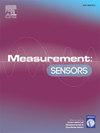电化学阻抗探针测定土壤总碳(TSC)
Q4 Engineering
引用次数: 0
摘要
土壤是地球生态系统的重要组成部分,有助于调节氮和碳循环,同时为促进植物生长提供充足的环境。土壤碳是土壤中存在的关键元素之一,为土壤健康提供了有价值的信息。土壤总碳(TSC)是有机碳源和无机碳源的综合组成,对进一步提高我们对土壤固碳的认识具有重要意义。采用EMIM[TF2N]-杯芳烃-壳聚糖复合材料修饰的三电极平台电化学传感器,开发了无需样品预处理即可原位跟踪土壤总碳的概念验证。利用计算化学和FTIR光谱分析了TSC与转导元素之间的相互作用化学。基于得到的相互作用结果,对传感器在3种不同土壤质地下进行了标定;沙质壤土,壤土和粘土壤土。采用电化学阻抗谱(EIS)技术在0.01% ~ 4%范围内测量TSC。剂量依赖性反应对三种土壤类型均具有良好的重复性。这是构建固结土壤总碳原位传感器的新概念验证,并使用标准验证原理进行了进一步的现场测试,以获得其实际的现场性能。本文章由计算机程序翻译,如有差异,请以英文原文为准。

Quantitation of total soil carbon (TSC) using an electrochemical impedance probe
Soil is an essential element of Earth's ecosystem that helps regulate the nitrogen and carbon cycles while providing an adequate environment to promote plant growth. Soil carbon is one of the key elements present in soil which provides valuable information on soil health. Total soil carbon (TSC) is a combined constituent of organic and inorganic sources of carbon, and it is important to further enhance our understanding of carbon sequestration in soil. An electrochemical sensor, using a three-electrode platform, modified by EMIM[TF2N]-calixarene-chitosan composite was used to develop a proof of concept to track total soil carbon in-situ without sample pretreatment. Computational chemistry and FTIR spectroscopy were utilized to understand the interaction chemistry between TSC and transducing elements. Based on the interaction results obtained, the sensor was calibrated in three different soil textures; sandy loam, loamy clay, and clay loam. Electrochemical impedance spectroscopy (EIS) technique was used to measure TSC across the range of 0.01 %–4 %. The dose dependent response showed excellent repeatability for all three soil types. This is a novel proof of concept for building a consolidated total soil carbon in-situ sensor, which was further field tested using standard validation principle, to obtain its real field capability.
求助全文
通过发布文献求助,成功后即可免费获取论文全文。
去求助
来源期刊

Measurement Sensors
Engineering-Industrial and Manufacturing Engineering
CiteScore
3.10
自引率
0.00%
发文量
184
审稿时长
56 days
 求助内容:
求助内容: 应助结果提醒方式:
应助结果提醒方式:


